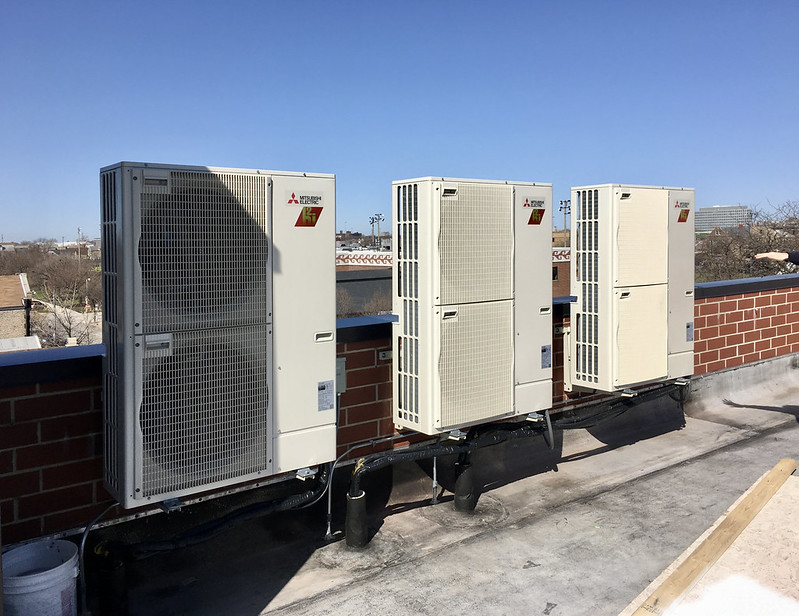
A recent report by the European Union’s Copernicus Climate Change Service found that global temperatures from February 2023 to January 2024 averaged 1.52°C above the preindustrial baseline. For the first 12-month period in history, global warming exceeded the 1.5°C target set forth in the Paris Accord.
Carbon dioxide (CO2) is the most important greenhouse gas, and long-term climate stabilization requires cutting net emissions of carbon dioxide to zero. Curbing release of other compounds, known collectively as “short-lived climate pollutants” (SLCPs), is also necessary. SLCPs, which include methane, black carbon, and hydrofluorocarbons (HFCs), have much shorter atmospheric lifespans than carbon dioxide. But pound for pound, they trap much more heat. Action on SLCPs can buy critical time to adapt our housing stock, infrastructure, and agricultural systems.
HFCs are used as refrigerants and foam-blowing agents. Their warming effect is expressed as their Global Warming Potential, or GWP, over 20- and 100-year time frames. R-410A, the HFC blend used in most U.S. heat pumps and central air conditioners, has a 20-year GWP of 4340. That means a pound of R-410A released into the atmosphere today will cause 4340 times as much warming over the next 20 years as a pound of CO2. Because its atmospheric half-life is relatively short, its 100-year GWP is lower but still more than 2000 times that of CO2.
HFCs are of particular concern for two reasons. One is that demand for air conditioning—and thus demand for refrigerants—is increasing, driven by warming and rising incomes in the Global South. Another is that heat pumps, which are central to efforts to decarbonize home heating, require refrigerants to operate.
Efforts to reduce refrigerant emissions from heat pumps and air conditioners have focused largely on HVAC manufacturers and technicians. These HVAC-centered strategies, while crucial, will miss important opportunities. A more comprehensive approach…
Weekly Newsletter
Get building science and energy efficiency advice, plus special offers, in your inbox.

This article is only available to GBA Prime Members
Sign up for a free trial and get instant access to this article as well as GBA’s complete library of premium articles and construction details.
Start Free TrialAlready a member? Log in














3 Comments
" Air-to-water systems can be complex and costly, and their efficiency is lower than air-to-air systems."
I disagree with the blanket statement that air-to-water heat pumps have lower efficiency than air-to-air. Certainly Chiltrix claims higher efficiency than typical air-to-air, they claim to meet the Energy Star standard for ground-source heat pumps with air source.
As to complexity, it is inherently simpler to pump water around your house than refrigerant. You can get air-to-water systems that are as simple as minisplits, you put a heat pump outside and a fan coil unit inside, plumb them together and turn it on. Every style of minisplit head is available as a fan coil unit. I would argue this is easier to get right than a minisplit because you don't see the performance issues with oversizing you get with minisplits. In particular, it is entirely feasible to put one fan coil unit in each room of a house, which would get you into trouble with minisplits. Another advantage is that if you want to get more complex and do things like floor heat or towel warmers, you can.
What I'd like to see is a through-wall monobloc system, where the heat pump is outside but the heat exchanger is inside. That would remove the requirement to use antifreeze, which would help keep the cost reasonable. You could probably fit everything through a 4" hole. The wiring could run through the same hole which would simplify installation.
The big issue with air-to-water right now is that it's a niche market and the prices are high.
+1 to a through-the-wall a2w system
I've looked around for such a system but haven't found anything yet.
I'll just have to invent it.
The one thing you do have to look out for if you're not using antifreeze is when you're in cooling mode making sure your water doesn't freeze in the evaporator.
Log in or become a member to post a comment.
Sign up Log in